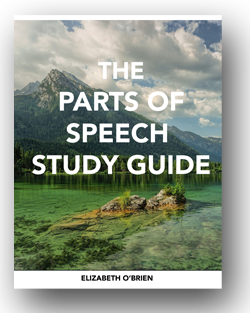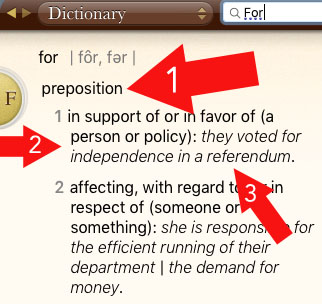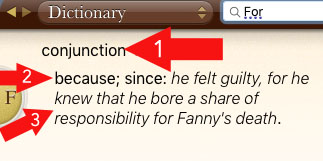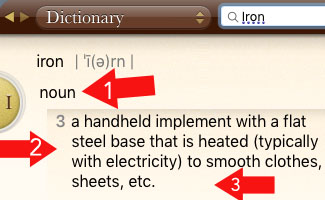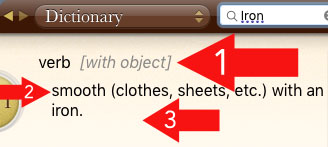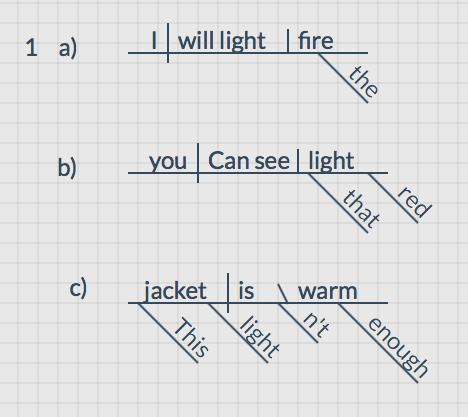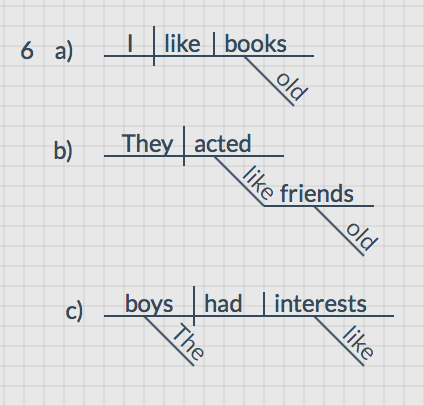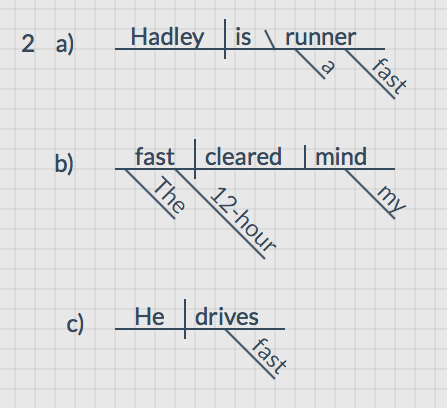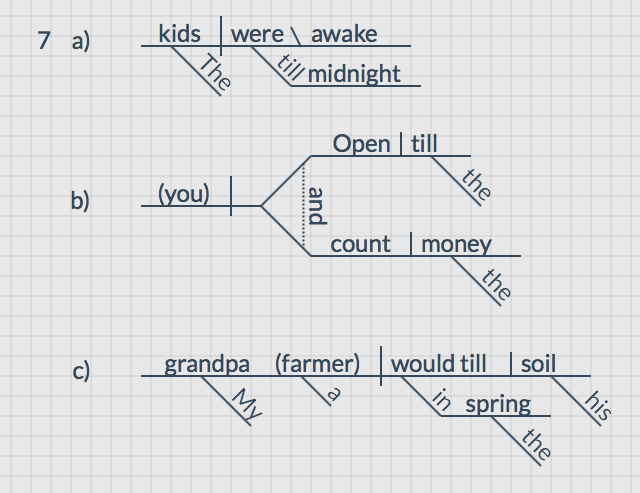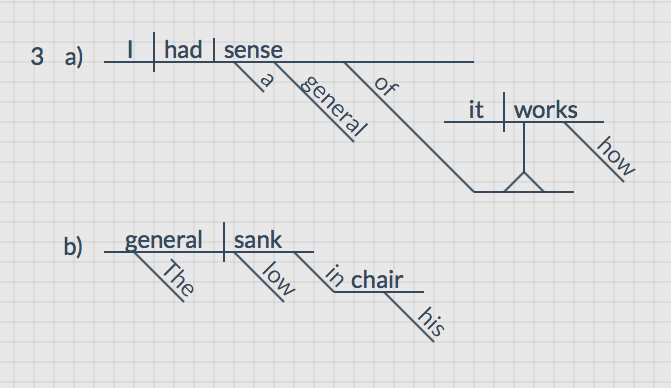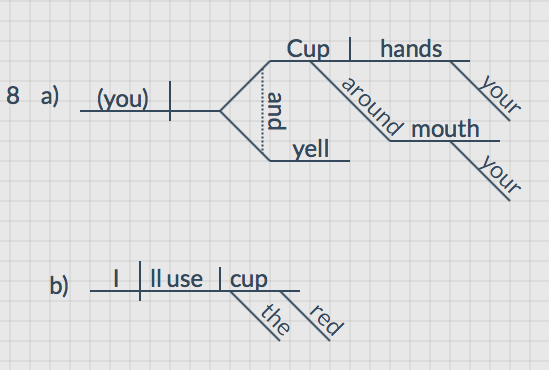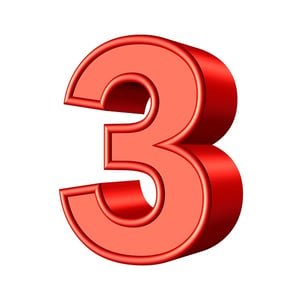The word “THAT” can be used as a Definite Article, a Conjunction, an Adverb, Pronoun, and Adjective. Take a look at the definitions and examples below to learn how “THAT” works as different parts of speech.
- Definite Article
“That” is classified as a definite article when it is used to indicate something/someone specific that the listeners or readers already know. For instance, read the sample sentence below:
“Pick up that book on the floor.”
The person being talked to knows exactly what “book” the speaker is referring to.
Definition:
a. refers to a specific person or thing, assuming that the person being addressed understands or is familiar with it
- Examples:
- Look at that old woman
- She lived in New York at that time.
- Where is that friend of yours?
2. Conjunction
Sometimes, “that” can also serve as a conjunction by combining two clauses. For instance, in the sentence:
“I bought the materials that are required for the project.”
“That“ is used to introduce the clause “…are required for the project.” It combines the dependent clause with the independent clause, “I bought the materials…”
Definition:
a. used to introduce a clause that is the subject or object of a verb
- Examples:
- He said that he was hungry.
b. used to introduce a clause that completes or explains the meaning of a previous noun or adjective or of the pronoun it
- Examples:
- She was so exhausted that she couldn’t think straight.
c. used to introduce a clause that states a reason or purpose
- Examples:
- The boss seems pleased that I wanted to pursue with the training.
3. Adverb
The word can also be used as an adverb, especially in verbal communication. It is normally used to show the intensity of a particular adjective. Take for example the sentence below:
“He is that old.”
In this sample sentence, the word “that” somehow intensifies and shows the degree of the adjective “old.”
Definition:
a. to the degree that is stated or suggested
- Examples:
- It wasn’t that difficult.
b. to the degree or extent indicated by a gesture
- Examples:
- She wouldn’t go that far.
c. to a great degree
- Examples:
- It was that wide, perhaps even wider.
4. Pronoun
In some cases, the word “that” also functions as a freestanding pronoun. Look at the sample sentence below:
“That’s exactly what I thought.”
It can be presumed that the word “that” is representing or replacing a specific thought.
Definition:
a. used to identify a specific person or thing observed by the speaker
- Examples:
- That is my brother with a new car.
b. referring to a specific thing previously mentioned, known, or understood
- Examples:
- It’s not as bad as all that.
- All the people that were left behind became infected with the virus.
5. Adjective
The word “that” functions as an adjective when it is used to modify a noun. It is also useful in clarifying which noun the speaker is referring to in the sentence. Take for example, the sentence below:
“That cat is so adorable.”
The word “that” modifies “cat” by emphasizing that it is the particular noun being referred to.
Definition:
a. used to indicate which person, thing, or idea is being shown, pointed to, or mentioned
- Examples:
- That building is the oldest in the city.
- Do you want this bag or that one?
b. used to indicate the one that is farther away or less familiar
- Examples:
- I don’t know how it got that way.
What part of speech are the following highlighted words?
- the bank card
- the Lloyds card
asked Aug 26, 2020 at 15:48
4
Nouns can modify nouns in English. I would say they are nouns functioning as modifiers which typically are taken care of by adjectives.
answered Aug 26, 2020 at 16:01
JennyJenny
1506 bronze badges
1
If you’ve ever found yourself wondering what part of speech a word is, you’re not alone. In this lesson, we’ll explore how to answer that question as well as why that answer can seem a bit confusing. You’ll also find a quiz at the bottom of the page so that you can test yourself, along with a free PDF download. Jackpot!
Would you like to make this lesson more interactive?
Download the free ebook.
If you’d like to fill out your answers as you move through this lesson, download the guide before you watch the video.
If you’d like to print it out and you’re serious about conserving the ink in your printer, print only pages 4, 9, 10, and 11.
Pop quiz, hot shot! Let’s say you’re at the grocery store deciding between chunky and creamy peanut butter (tough choice) when someone walks up to you and asks, «What part of speech is the word love?»
Obviously, the first thing to do is run away from this person. But then, your mind might linger on that question, and you might start to wonder Hmm … what part of speech is the word love anyway?
At that point, you would probably think of some example sentences to figure it out.
I love peanut butter.
From this sentence, you might conclude that love is a verb since you know that verbs express action, and love is showing an action in this sentence.
You wouldn’t be wrong, but then you might think of this sentence:
Love for peanut butter brought me to the store today.
Wait a minute! Here, love is a noun. It’s an idea, and it’s the subject of the sentence. What’s the deal? How can love be a verb and a noun?
Here’s a secret about the parts of speech that many people don’t realize:
Many words can function as more than one part of speech.
They will only be doing one part-of-speech job at a time, though. In our example sentences above, we can see that love can be a verb and a noun, and we can also see that it’s doing just one of those jobs in each sentence.
How can you figure out what part(s) of speech a word can be, and how will you know what the word is acting as in any given sentence?
The first thing to do is to study the parts of speech and understand how they work.
Here’s what you can do after you have a sense of what the parts of speech are and how they work:
What part(s) of speech can this word be?
Look up the word in a dictionary. Dictionaries will show you the possible parts of speech that a word can function as. You can use a dictionary that’s an actual book, an online dictionary, or your device’s built-in dictionary. The dictionary will list each word’s possible part of speech, and it will give you definitions for all of the meanings of a word within each part of speech.
What part of speech is this word in this sentence?
In order to figure out how a word is functioning, we need to look at the word within the context of a sentence. Look over your sentence, and then open up your dictionary. Match the meaning of the word in your sentence with the most fitting dictionary definition. Then you’ll be able to tell what part of speech it is in your sentence.
Let’s look at two examples of words acting as different parts of speech.
We’ll look at the words for and iron, and we’ll see them acting as different parts of speech. We’ll also take a peek at what the dictionary says for each word.
What part of speech are the words in bold?
I asked for pie.
I cried, for I knew that the pie was gone.
Where is the iron?
Please iron my shirt.
For
I asked for pie. (preposition)
1. Just below the word that you look up, you’ll find a listing for a part of speech. The first listing is usually the most common way that the word is used. For is most commonly used as a preposition.
2. Next, you’ll find definitions of the word for each part of speech. If there is more than one definition, they’ll be numbered. There are many definitions for for as a preposition, and here you can see two.
3. After the definition, you’ll often find an example of how to use the word as that part of speech and definition. You can see the examples in italics.
I cried, for I knew that the pie was gone. (conjunction)
1. Below all of the definitions for for as a preposition, we can see a listing for another part of speech. It’s here that we see that for can also be a conjunction.
2. Here’s the definition. It’s not numbered because there is only one entry for for as a conjunction.
3. Here is an example sentence for us. (It’s strange, though, that they also used for as a preposition in this example as well as a conjunction!)
Iron
Where is the iron? (noun)
1. The first part of speech listed under iron is noun.
2. The first two definitions of iron as a noun weren’t the ones used in the sentence above, but the third entry was what I was looking for.
3. They don’t give us an example sentence. Boohoo!
Please iron my shirt. (verb)
1. Underneath all of the definitions for iron as a noun, I came here which let me know that iron can also be used as a verb.
2. There’s only one definition for iron as a verb, so they didn’t number this entry.
3. Again, there’s no example sentence. Perhaps everyone at the dictionary company called in sick on the day that they had to write example sentences for iron.
Test Yourself
I. Label the Parts of Speech
Directions: Name the part of speech for the underlined word in each sentence. Use a dictionary if you need one. For extra credit, diagram the sentences. 
1. LIGHT
a) I will light the fire.
b) Can you see that red light?
c) This light jacket isn’t warm enough.
2. FAST
a) Hadley is a fast runner.
b) The 12-hour fast cleared my mind.
c) He drives fast!
3. GENERAL
a) I had a general sense of how it works.
b) The general sank low in his chair.
4. BEFORE
a) Practice piano before you play with your friends.
b) Practice piano before dinner.
5. ROLL
a) Roll the dice.
b) I will eat the soup with a roll.
6. LIKE
a) I like old books.
b) They acted like old friends.
c) The boys had like interests.
7. TILL
a) The kids were awake till midnight.
b) Open the till and count the money.
c) My grandpa, a farmer, would till his soil in the spring.
8. CUP
a) Cup your hands around your mouth and yell.
b) I’ll use the red cup.
9. DRIVE
a) The long drive through the countryside lifted my spirits.
b) I always drive within the speed limit.
10. BLUE
a) Everyone in the family photo wore blue.
b) Jackie lives in the blue house.
Would you like to download this lesson?
- 20 Pages
- Includes all of the instructions and exercises on this page
- 4 pages with blank space to write answers
- 7 pages of answers (All 24 sentence diagrams included)
- Printable
- If you only want to print out the pages where you’ll be writing (I’m looking at you, expensive ink cartridges.), print pages 4, 9, 10, and 11.
- FREE
II. Write Your Own Sentences
Directions: Write your own sentences using the words below. Make sure the word is being used as the part of speech indicated on the left side. Underline the word in your sentence. The first one is done for you. Feel free to use a dictionary!
1. Drive
Noun: The long drive through the countryside lifted my spirits.
Verb: I always drive within the speed limit.
2. Baby
Noun: ___________________________________
Adjective: ________________________________
Verb: ___________________________________
3. Up
Preposition: ________________________________
Adverb: ___________________________________
Answers
I. Label the Parts of Speech
1. LIGHT
a) I will light the fire. VERB
b) Can you see that red light? NOUN
c) This light jacket isn’t warm enough. ADJECTIVE
6. LIKE
a) I like old books. VERB
b) They acted like old friends. PREPOSITION
c) The boys had like interests. ADJECTIVE
2. FAST
a) Hadley is a fast runner. ADJECTIVE
b) The 12-hour fast cleared my mind. NOUN
c) He drives fast! ADVERB
7. TILL
a) The kids were awake till midnight. PREPOSITION
b) Open the till and count the money. NOUN
c) My grandpa, a farmer, would till his soil in the spring. VERB
3. ABOVE
a) I had a general sense of how it works. ADJECTIVE
b) The general sank low in his chair. NOUN
8. CUP
a) Cup your hands around your mouth and yell. VERB
b) I’ll use the red cup. NOUN
4. BEFORE
a) Practice piano before you play with your friends. CONJUNCTION
b) Practice piano before dinner. PREPOSITION
9. DRIVE
a) The long drive through the countryside lifted my spirits. NOUN
b) I always drive within the speed limit. VERB
5. ROLL
a) Roll the dice. VERB
b) I will eat the soup with a roll. NOUN
10. BLUE
a) Everyone in the family photo wore blue. NOUN
b) Jackie lives in the blue house. ADJECTIVE
* The sentence diagrams for 4, 5, 9, and 10 are available in the downloadable version of this lesson.
Answers for II. Write Your Own Sentences are also available in the free, downloadable version of this lesson.
Would you like to download this lesson?
- 20 Pages
- Includes all of the instructions and exercises on this page
- 4 pages with blank space to write answers
- 7 pages of answers (All 24 sentence diagrams included)
- Printable
- If you only want to print out the pages where you’ll be writing (I’m looking at you, expensive ink cartridges.), print pages 4, 9, 10, and 11.
- FREE
Would you like to see another example of this concept? Let’s look at how the word balance can be a noun or a verb, and how it can help you think about your life.
When you start breaking it down, the English language is pretty complicated—especially if you’re trying to learn it from scratch! One of the most important English words to understand is the.
But what part of speech is the word the, and when should it be used in a sentence? Is the word the a preposition? Is the a pronoun? Or is the word the considered a different part of speech?
To help you learn exactly how the word the works in the English language, we’re going to do the following in this article:
- Answer the question, «What part of speech is the?»
- Explain how to use the correctly in sentences, with examples
- Provide a full list of other words that are classified as the same part of speech as the in the English language
Okay, let’s get started learning about the word the!
In the English language the word the is classified as an article, which is a word used to define a noun. (More on that a little later.)
But an article isn’t one of the eight parts of speech. Articles are considered a type of adjective, so «the» is technically an adjective as well. However, «the» can also sometimes function as an adverb in certain instances, too.
In short, the word «the» is an article that functions as both an adjective and an adverb, depending on how it’s being used. Having said that, the is most commonly used as an article in the English language. So, if you were wondering, «Is the a pronoun, preposition, or conjunction,» the answer is no: it’s an article, adjective, and an adverb!
While we might think of an article as a story that appears in a newspaper or website, in English grammar, articles are words that help specify nouns.
The as an Article
So what are «articles» in the English language? Articles are words that identify nouns in order to demonstrate whether the noun is specific or nonspecific. Nouns (a person, place, thing, or idea) can be identified by two different types of articles in the English language: definite articles identify specific nouns, and indefinite articles identify nonspecific nouns.
The word the is considered a definite article because it defines the meaning of a noun as one particular thing. It’s an article that gives a noun a definite meaning: a definite article. Generally, definite articles are used to identify nouns that the audience already knows about. Here’s a few examples of how «the» works as a definite article:
We went to the rodeo on Saturday. Did you see the cowboy get trampled by the bull?
This (grisly!) sentence has three instances of «the» functioning as a definite article: the rodeo, the cowboy, and the bull. Notice that in each instance, the comes directly before the noun. That’s because it’s an article’s job to identify nouns.
In each of these three instances, the refers to a specific (or definite) person, place, or thing. When the speaker says the rodeo, they’re talking about one specific rodeo that happened at a certain place and time. The same goes for the cowboy and the bull: these are two specific people/animals that had one kinda terrible thing happen to them!
It can be a bit easier to see how definite articles work if you see them in the same sentence as an indefinite article (a or an). This sentence makes the difference a lot more clear:
A bat flew into the restaurant and made people panic.
Okay. This sentence has two articles in it: a and the. So what’s the difference? Well, you use a when you’re referring to a general, non-specific person, place, or thing because its an indefinite article. So in this case, using a tells us this isn’t a specific bat. It’s just a random bat from the wild that decided to go on an adventure.
Notice that in the example, the writer uses the to refer to the restaurant. That’s because the event happened at a specific time and at a specific place. A bat flew into one particular restaurant to cause havoc, which is why it’s referred to as the restaurant in the sentence.
The last thing to keep in mind is that the is the only definite article in the English language, and it can be used with both singular and plural nouns. This is probably one reason why people make the mistake of asking, «Is the a pronoun?» Since articles, including the, define the meaning of nouns, it seems like they could also be combined with pronouns. But that’s not the case. Just remember: articles only modify nouns.
Adjectives are words that help describe nouns. Because «the» can describe whether a noun is a specific object or not, «the» is also considered an adjective.
The as an Adjective
You know now that the is classified as a definite article and that the is used to refer to a specific person, place, or thing. But defining what part of speech articles are is a little bit tricky.
There are eight parts of speech in the English language: nouns, pronouns, verbs, adverbs, adjectives, prepositions, conjunctions, and interjections. The thing about these eight parts of speech in English is that they contain smaller categories of types of words and phrases in the English language. Articles are considered a type of determiner, which is a type of adjective.
Let’s break down how articles fall under the umbrella of «determiners,» which fall under the umbrella of adjectives. In English, the category of «determiners» includes all words and phrases in the English language that are combined with a noun to express an aspect of what the noun is referring to. Some examples of determiners are the, a, an, this, that, my, their, many, few, several, each, and any. The is used in front of a noun to express that the noun refers to a specific thing, right? So that’s why «the» can be considered a determiner.
And here’s how determiners—including the article the—can be considered adjectives. Articles and other determiners are sometimes classified as adjectives because they describe the nouns that they precede. Technically, the describes the noun it precedes by communicating specificity and directness. When you say, «the duck,» you’re describing the noun «duck» as referring to a specific duck. This is different than saying a duck, which could mean any one duck anywhere in the world!
When «the» comes directly before a word that’s not a noun, then it’s operating as an adverb instead of an adjective.
The as an Adverb
Finally, we mentioned that the can also be used as an adverb, which is one of the eight main parts of speech we outlined above. Adverbs modify or describe verbs, adjectives, or other adverbs, but never modify nouns.
Sometimes, the can be used to modify adverbs or adjectives that occur in the comparative degree. Adverbs or adjectives that compare the amounts or intensity of a feeling, state of being, or action characterizing two or more things are in the comparative degree. Sometimes the appears before these adverbs or adjectives to help convey the comparison!
Here’s an example where the functions as an adverb instead of an article/adjective:
Lainey believes the most outrageous things.
Okay. We know that when the is functioning as an adjective, it comes before a noun in order to clarify whether it’s specific or non-specific. In this case, however, the precedes the word most, which isn’t a noun—it’s an adjective. And since an adverb modifies an adjective, adverb, or verb, that means the functions as an adverb in this sentence.
We know that can be a little complicated, so let’s dig into another example together:
Giovanni’s is the best pizza place in Montana.
The trick to figuring out whether the article the is functioning as an adjective or an adverb is pretty simple: just look at the word directly after the and figure out its part of speech. If that word is a noun, then the is functioning as an adjective. If that word isn’t a noun, then the is functioning like an adverb.
Now, reread the second example. The word the comes before the word best. Is best a noun? No, it isn’t. Best is an adjective, so we know that the is working like an adverb in this sentence.
How to Use The Correctly in Sentences
An important part of answering the question, «What part of speech is the word the?» includes explaining how to use the correctly in a sentence. Articles like the are some of the most common words used in the English language. So you need to know how and when to use it! And since using the as an adverb is less common, we’ll provide examples of how the can be used as an adverb as well.
Using The as an Article
In general, it is correct and appropriate to use the in front of a noun of any kind when you want to convey specificity. It’s often assumed that you use the to refer to a specific person, place, or thing that the person you’re speaking to will already be aware of. Oftentimes, this shared awareness of who, what, or where «the» is referring to is created by things already said in the conversation, or by context clues in a given social situation.
Let’s look at an example here:
Say you’re visiting a friend who just had a baby. You’re sitting in the kitchen at your friend’s house while your friend makes coffee. The baby, who has been peacefully dozing in a bassinet in the living room, begins crying. Your friend turns to you and asks, «Can you hold the baby while I finish doing this?»
Now, because of all of the context surrounding the social situation, you know which baby your friend is referring to when they say, the baby. There’s no need for further clarification, because in this case, the gives enough direct and specific meaning to the noun baby for you to know what to do!
In many cases, using the to define a noun requires less or no awareness of an immediate social situation because people have a shared common knowledge of the noun that the is referring to. Here are two examples:
Are you going to watch the eclipse tomorrow?
Did you hear what the President said this morning?
In the first example, the speaker is referring to a natural phenomenon that most people are aware of—eclipses are cool and rare! When there’s going to be an eclipse, everyone knows about it. If you started a conversation with someone by saying, «Are you going to watch the eclipse tomorrow?» it’s pretty likely they’d know which eclipse the is referring to.
In the second example, if an American speaking to another American mentions what the President said, the other American is likely going to assume that the refers to the President of the United States. Conversely, if two Canadians said this to one another, they would likely assume they’re talking about the Canadian prime minister!
So in many situations, using the before a noun gives that noun specific meaning in the context of a particular social situation.
Using The as an Adverb
Now let’s look at an example of how «the» can be used as an adverb. Take a look at this sample sentence:
The tornado warning made it all the more likely that the game would be canceled.
Remember how we explained that the can be combined with adverbs that are making a comparison of levels or amounts of something between two entities? The example above shows how the can be combined with an adverb in such a situation. The is combined with more and likely to form an adverbial phrase.
So how do you figure this out? Well, if the words immediately after the are adverbs, then the is functioning as an adverb, too!
Here’s another example of how the can be used as an adverb:
I had the worst day ever.
In this case, the is being combined with the adverb worst to compare the speaker’s day to the other days. Compared to all the other days ever, this person’s was the worst…period. Some other examples of adverbs that you might see the combined with include all the better, the best, the bigger, the shorter, and all the sooner.
One thing that can help clarify which adverbs the can be combined with is to check out a list of comparative and superlative adverbs and think about which ones the makes sense with!
3 Articles in the English Language
Now that we’ve answered the question, «What part of speech is the?», you know that the is classified as an article. To help you gain a better understanding of what articles are and how they function in the English language, here’s a handy list of 3 words in the English language that are also categorized as articles.
|
Article |
Type of Article |
What It Does |
Example Sentence |
|
The |
Definite Article |
Modifies nouns by giving them a specific meaning |
Please fold the laundry. Do you want to go to the concert? |
|
A |
Indefinite Article |
Modifies a noun that refers to a general idea; appears before nouns that begin with a consonant. |
Do you want to go to a concert? |
|
An |
Indefinite Article |
Modifies a noun that refers to a general idea; appears before nouns that begin with a vowel. |
Do you want to go to an arcade? Let’s get an iguana. |
What’s Next?
If you’re looking for more grammar resources, be sure to check out our guides on every grammar rule you need to know to ace the SAT (or the ACT)!
Learning more about English grammar can be really helpful when you’re studying a foreign language, too. We highly recommend that you study a foreign language in high school—not only is it great for you, it looks great on college applications, too. If you’re not sure which language to study, check out this helpful article that will make your decision a lot easier.
Speaking of applying for college…one of the most important parts of your application packet is your essay. Check out this expert guide to writing college essays that will help you get into your dream school.
Need more help with this topic? Check out Tutorbase!
Our vetted tutor database includes a range of experienced educators who can help you polish an essay for English or explain how derivatives work for Calculus. You can use dozens of filters and search criteria to find the perfect person for your needs.
Have friends who also need help with test prep? Share this article!
About the Author
Ashley Sufflé Robinson has a Ph.D. in 19th Century English Literature. As a content writer for PrepScholar, Ashley is passionate about giving college-bound students the in-depth information they need to get into the school of their dreams.
A part of speech is a term used in traditional grammar for one of the nine main categories into which words are classified according to their functions in sentences, such as nouns or verbs. Also known as word classes, these are the building blocks of grammar.
Parts of Speech
- Word types can be divided into nine parts of speech:
- nouns
- pronouns
- verbs
- adjectives
- adverbs
- prepositions
- conjunctions
- articles/determiners
- interjections
- Some words can be considered more than one part of speech, depending on context and usage.
- Interjections can form complete sentences on their own.
Every sentence you write or speak in English includes words that fall into some of the nine parts of speech. These include nouns, pronouns, verbs, adjectives, adverbs, prepositions, conjunctions, articles/determiners, and interjections. (Some sources include only eight parts of speech and leave interjections in their own category.)
Learning the names of the parts of speech probably won’t make you witty, healthy, wealthy, or wise. In fact, learning just the names of the parts of speech won’t even make you a better writer. However, you will gain a basic understanding of sentence structure and the English language by familiarizing yourself with these labels.
Open and Closed Word Classes
The parts of speech are commonly divided into open classes (nouns, verbs, adjectives, and adverbs) and closed classes (pronouns, prepositions, conjunctions, articles/determiners, and interjections). The idea is that open classes can be altered and added to as language develops and closed classes are pretty much set in stone. For example, new nouns are created every day, but conjunctions never change.
In contemporary linguistics, the label part of speech has generally been discarded in favor of the term word class or syntactic category. These terms make words easier to qualify objectively based on word construction rather than context. Within word classes, there is the lexical or open class and the function or closed class.
Read about each part of speech below and get started practicing identifying each.
Noun
Nouns are a person, place, thing, or idea. They can take on a myriad of roles in a sentence, from the subject of it all to the object of an action. They are capitalized when they’re the official name of something or someone, called proper nouns in these cases. Examples: pirate, Caribbean, ship, freedom, Captain Jack Sparrow.
Pronoun
Pronouns stand in for nouns in a sentence. They are more generic versions of nouns that refer only to people. Examples: I, you, he, she, it, ours, them, who, which, anybody, ourselves.
Verb
Verbs are action words that tell what happens in a sentence. They can also show a sentence subject’s state of being (is, was). Verbs change form based on tense (present, past) and count distinction (singular or plural). Examples: sing, dance, believes, seemed, finish, eat, drink, be, became
Adjective
Adjectives describe nouns and pronouns. They specify which one, how much, what kind, and more. Adjectives allow readers and listeners to use their senses to imagine something more clearly. Examples: hot, lazy, funny, unique, bright, beautiful, poor, smooth.
Adverb
Adverbs describe verbs, adjectives, and even other adverbs. They specify when, where, how, and why something happened and to what extent or how often. Examples: softly, lazily, often, only, hopefully, softly, sometimes.
Preposition
Prepositions show spacial, temporal, and role relations between a noun or pronoun and the other words in a sentence. They come at the start of a prepositional phrase, which contains a preposition and its object. Examples: up, over, against, by, for, into, close to, out of, apart from.
Conjunction
Conjunctions join words, phrases, and clauses in a sentence. There are coordinating, subordinating, and correlative conjunctions. Examples: and, but, or, so, yet, with.
Articles and Determiners
Articles and determiners function like adjectives by modifying nouns, but they are different than adjectives in that they are necessary for a sentence to have proper syntax. Articles and determiners specify and identify nouns, and there are indefinite and definite articles. Examples: articles: a, an, the; determiners: these, that, those, enough, much, few, which, what.
Some traditional grammars have treated articles as a distinct part of speech. Modern grammars, however, more often include articles in the category of determiners, which identify or quantify a noun. Even though they modify nouns like adjectives, articles are different in that they are essential to the proper syntax of a sentence, just as determiners are necessary to convey the meaning of a sentence, while adjectives are optional.
Interjection
Interjections are expressions that can stand on their own or be contained within sentences. These words and phrases often carry strong emotions and convey reactions. Examples: ah, whoops, ouch, yabba dabba do!
How to Determine the Part of Speech
Only interjections (Hooray!) have a habit of standing alone; every other part of speech must be contained within a sentence and some are even required in sentences (nouns and verbs). Other parts of speech come in many varieties and may appear just about anywhere in a sentence.
To know for sure what part of speech a word falls into, look not only at the word itself but also at its meaning, position, and use in a sentence.
For example, in the first sentence below, work functions as a noun; in the second sentence, a verb; and in the third sentence, an adjective:
- Bosco showed up for work two hours late.
- The noun work is the thing Bosco shows up for.
- He will have to work until midnight.
- The verb work is the action he must perform.
- His work permit expires next month.
- The attributive noun [or converted adjective] work modifies the noun permit.
Learning the names and uses of the basic parts of speech is just one way to understand how sentences are constructed.
Dissecting Basic Sentences
To form a basic complete sentence, you only need two elements: a noun (or pronoun standing in for a noun) and a verb. The noun acts as a subject and the verb, by telling what action the subject is taking, acts as the predicate.
- Birds fly.
In the short sentence above, birds is the noun and fly is the verb. The sentence makes sense and gets the point across.
You can have a sentence with just one word without breaking any sentence formation rules. The short sentence below is complete because it’s a command to an understood «you».
- Go!
Here, the pronoun, standing in for a noun, is implied and acts as the subject. The sentence is really saying, «(You) go!»
Constructing More Complex Sentences
Use more parts of speech to add additional information about what’s happening in a sentence to make it more complex. Take the first sentence from above, for example, and incorporate more information about how and why birds fly.
- Birds fly when migrating before winter.
Birds and fly remain the noun and the verb, but now there is more description.
When is an adverb that modifies the verb fly. The word before is a little tricky because it can be either a conjunction, preposition, or adverb depending on the context. In this case, it’s a preposition because it’s followed by a noun. This preposition begins an adverbial phrase of time (before winter) that answers the question of when the birds migrate. Before is not a conjunction because it does not connect two clauses.
The words
of language, depending on various formal and semantic features, are
divided into classes. The traditional grammatical classes of words
are called “parts of speech”, since the word is distinguished not
only by grammatical, but also by semantico-lexemic properties, some
scholars also refer to parts of speech as lexico-grammatical
categories (Смирницкий).
It should
be noted that the term “parts of speech” is purely traditional
and conventional. This name was introduced in the grammatical
teaching of Ancient Greece, where no strict differenciation was drawn
between the word as a vocabulary unit and the word as a functional
element of the sentence.
In modern
linguistics, parts of speech are discriminated on the basis of the
three criteria: “semantic, formal and functional” (Щерба).
The
semantic criterion presupposes (предполагать,
заключать
в
себя)
the generalized meaning, which is characteristic of all the words
constituting (составлять)
a given part of speech. This meaning is understood as the categorical
meaning of the part of speech.
The formal
criterion exposes (выставлять
на
показ)
the specific inflexional and derivational (word-building) features of
part a part of speech.
The
functional criterion concerns the syntactic role of words in the
sentence, typical of a part of speech.
These
three factors of categorical characterization of words are referred
to as ‘meaning’, form and function.
The
three-criteria characterization of parts of speech was developed and
applied to practice in Soviet linguistics. Three names are especially
notable for the elaboration of these criteria: V.V. Vinogradov
in connection with the study of Russian Grammar, A.I. Smirnitskyand
B.A. Ilyish in connection with their study of English Grammar.
Alongside
of the three-criteria principle of dividing the words into
grammatical classes modern linguistics has developed another,
narrower principle based on syntactic featuring of words only.
On
the material of Russian, the principle of syntactic approach to the
classification of word-stock were outlined in the works of A.M.
Peshkovsky. The principles of syntactic classification of English
words were worked out by L. Bloomfield and his followers L. Harris
and especially Ch. Fries.
Here
is how Ch. Fries presents his scheme of English word-classes.
For
his materials he chooses tape-recorded spontaneous conversations
which last 50 hours.
The
three typical sentences are:
Frames:
A.
The concert was good (always).
B.
The clerk remembered the tax (suddenly).
C.
The team went there.
As
a result he divides the words into 4 classes: class I, II, III, IV,
which correspond to the traditional nouns, verbs, adjectives and
adverbs.
Thus,
class I includes all words which can be used in the position of the
words ‘concert’ (frame A), clerk and tax (frame B), team (frame C),
i.e. in the position of subject and object.
Class
II includes the words which have the position of the words ‘was’,
‘remembered’, ‘went’ in the given frames, i.e. in the position of the
predicate or part of the predicate.
Class
III includes the words having the position of ‘good’, and ‘new’, i.e.
in the position of the predicative or attribute.
And
the words of class IV are used in the position of ‘there’ in Frame C,
i.e. of an adverbial modifier.
These
classes are subdivided into subtypes.
Ch.
Fries sticks to the positional approach. Thus such words as man, he,
the others, another belong to class I as they can take the position
before the words of class II, i.e. before the finite verb.
Besides
the 4 classes, Fries finds 15 groups of function words. Following the
positional approach, he includes into one and the same group the
words of quite different types.
Thus,
group A includes all words, which can take the position of the
definite article ‘the’, such as: no, your, their, both, few, much,
John’s, our, four, twenty.
But
Fries admits, that some of these words may take the position of class
I in other sentences.
Thus,
this division is very complicated, one and the same word may be found
in different classes due to its position in the sentence. So Fries’
idea, though interesting, doesn’t reach its aim to create a new
classification of classes of words, but his material gives
interesting data concerning the distribution of words and their
syntactic valency.
Today
many scholars believe that it is difficult to classify English parts
of speech using one criterion.
Some
Soviet linguists class the English parts of speech according to a
number of features.
1.
Lexico-grammatical meaning: (noun — substance, adjective — property,
verb — action, numeral — number, etc).
2.
Lexico — grammatical morphemes: (-er, -ist, -hood — noun; -fy, -ize —
verb; -ful, -less — adjective, etc).
3.
Grammatical categories and paradigms.
4.
Syntactic functions
5.
Combinability (power to combine with other words).
In
accord with the described criteria, words are divided into notional
and functional, which reflects their division in the earlier
grammatical tradition into changeable and unchangeable.
To
the notional parts of speech of the English language belong the noun,
the adjective, the numeral, the pronoun, the verb, the adverb.
To
the basic functional series of words in English belong the article,
the preposition, the conjunction, the particle, the modal word, the
interjection.
The
difference between them may be summed up as follows:
1) Notional
parts
of speech express notions and function as sentence parts (subject,
object, attribute, adverbial modifier).
2) Notional
parts
of speech have a naming function and make a sentence by themselves:
Go!
***
1)
Functional
words
(or form-words) cannot be used as parts of the sentence and cannot
make a sentence by themselves.
2)
Functional
words
have no naming function but express relations.
3)
Functional
words
have a negative combinability but a linking or specifying function.
E.g. prepositions and conjunctions are used to connect words, while
particles and articles — to specify them.
Each
part of speech is further subseries in accord with various particular
semantico-functional and formal features of the words.
Thus,
nouns are subdivided into proper and common, animate and unanimate,
countable and uncountable, conctrete and abstract.
E.g.
Mary-girl, man-earth, can-water, stone-honesty.
This
proves that the majority of English parts of speech has a field-like
structure.
The
theory of grammatical fields was worked out by V.G. Admoni on the
material of the German language.
The
essence of this theory is as follows. Every part of speech has words,
which obtain all the features of this part of speech. They are its
nucleus. But there are such words which don’t have all the features
of this part of speech, though they belong to it.
Consequently,
the field includes central and peripheral elements.
Because
of the rigid word-order in the English sentence and scantiness of
inflected forms, English parts of speech have developed a number of
grammatical meanings and an ability to be converted.
E.g.
It’s better to be a has-been than a never-was.
He
grows old. He grows roses.
The
conversation may be written one part of speech.
She
took off her glasses.
Give
me a glass of water.
The
person in the glass was making faces.
Don’t
break the glass when cleaning the window.
They
are called variants of one part of speech. Because of homonymy and
polysemy many notional words may have the same form as functional
words.
E.g.
He grows roses — He grows old.
Professor
Ilyish objects to the division of words into notional and functional
(formal) parts of speech. He says that prepositions and conjunctions
are no less notional than nouns and verbs, as they also express some
relations and connections existing independently.
Соседние файлы в папке Gosy
- #
- #
- #
- #
- #
- #
- #

